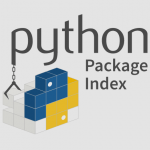Bug patched in March is still being exploited to take full control of servers. Attackers are mass-exploiting a recently fixed vulnerability in the Drupal content management system that allows them to take complete control of powerful website servers, researchers from multiple security companies are warning.
At least three different attack groups are exploiting “Drupalgeddon2,” the name given to an extremely critical vulnerability Drupal maintainers patched in late March, researchers with Netlab 360 said Friday. Formally indexed as CVE- 2018-7600, Drupalgeddon2 makes it easy for anyone on the Internet to take complete control of vulnerable servers simply by accessing a URL and injecting publicly available exploit code. Exploits allow attackers to run code of their choice without having to have an account of any type on a vulnerable website. The remote-code vulnerability harkens back to a 2014 Drupal vulnerability that also made it easy to commandeer vulnerable servers.
Drupalgeddon2 “is under active attack, and every Drupal site behind our network is being probed constantly from multiple IP addresses,” Daniel Cid, CTO and founder of security firm Sucuri, told Ars. “Anyone that has not patched is hacked already at this point. Since the first public exploit was released, we are seeing this arms race between the criminals as they all try to hack as many sites as they can.”
China-based Netlab 360, meanwhile, said at least three competing attack groups are exploiting the vulnerability. The most active group, Netlab 360 researchers said in a blog post published Friday, is using it to install multiple malicious payloads, including cryptocurrency miners and software for performing distributed denial-of-service attacks on other domains. The group, dubbed Muhstik after a keyword that pops up in its code, relies on 11 separate command-and-control domains and IP addresses, presumably for redundancy in the event one gets taken down.
Added punch
Netlab 360 said that the IP addresses that deliver the malicious payloads are widely dispersed and mostly run Drupal, an indication of worm-like behavior that causes infected sites to attack vulnerable sites that have not yet been compromised. Worms are among the most powerful types of malware because their self-propagation gives them viral qualities.
Adding extra punch, Muhstik is exploiting previously patched vulnerabilities in other server applications in the event administrators have yet to install the fixes. Webdav, WebLogic, Webuzo, and WordPress are some of the other applications that the group is targeting.

Working as a cyber security solutions architect, Alisa focuses on application and network security. Before joining us she held a cyber security researcher positions within a variety of cyber security start-ups. She also experience in different industry domains like finance, healthcare and consumer products.



































